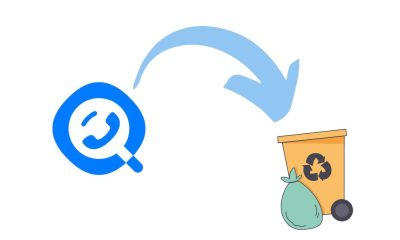Software Development
Best Continuous Integration Tools for 2023
Searching for the ideal way to guarantee your software dev process is current and proficient? In the ever-changing software industry, continuous integration tools are imperative for success in 2023. This article will give a summary of the leading CI tools and solutions available now. Understand precisely what continuous integration is, why it matters and which tools will help you succeed!
Introduction
Continuous Integration (CI) is the practice of automating the integration of software data and parts. It keeps a consistent, reliable quality for the system. Developers commit code regularly. This code is then automatically built and tested. It helps to find errors or inconsistencies quickly before they become major issues.
The use of CI Tools is now essential to modern software development processes. It speeds up the process by providing automated validation, version control, and builds. Automating these processes saves time, reduces manual effort, and boosts developer productivity.
CI tools are important for successful software projects. They save time and give feedback on each change made by developers. Deciding on the right CI tool depends on the project’s scope and needs. You should consider scalability & performance, cost efficiency & level of support.
Here’s a list of the best CI Tools for 2023!
Benefits of Continuous Integration
Continuous Integration (CI) is getting popular in software development. It is about quickly combining changes from developers into a unified package. CI saves time by helping to find problems, solve conflicts and deliver tested releases.
Using CI brings advantages. It streamlines testing, finds bugs early and delivers faster. This reduces costs for maintenance and implementation. It also helps communication between developers and users, making it faster to create a reliable product.
CI lets us set up deployment pipelines easily while showing how long it takes to approve or release changes. Automation tools reduce human error and maintenance costs. Notifications trigger when something goes wrong or when risks happen during development or testing, and this reduces response times.
Challenges of Continuous Integration
Continuous Integration (CI) is a process of continually building and testing software. This ensures new features are quickly and reliably added to production. An effective CI system keeps development teams on track and reduces the risk of introducing new code.
CI can help speed up data collection for testing and feedback loops for user experience optimization. It can also be beneficial for smoother product launches.
Challenges with CI include:
- Time – CI tools may take time to achieve advanced integrations. This can slow down product releases if not managed properly.
- Cost – Commercial CI tools are expensive compared to open source counterparts.
- System integration – Any errors or incompatibilities along the way can slow down development teams.
- Security – Security breaches are an issue. CI must only allow authenticated users to access sensitive data – especially during deployments or upgrades.
Popular Continuous Integration Tools
Continuous Integration (CI) is a process of merging developer copies with a shared main repository. It ensures each change is tested and integrated quickly. In 2023, some of the most popular CI tools are still around:
- Gitlab CI is open-source and used for development. It provides self-hosted runners and automated deployments.
- Travis CI is also open-source. It can run tests on Linux and macOS. It has custom builds, caching, and virtual machine features.
- CircleCI is a paid tool. It combines Docker containers with testing scripts to prevent build failures. It has a free plan with unlimited private repositories and powerful customization options.
- Jenkins is an open-source automation server. It is flexible and can use its own plugin library or existing plugins. It provides cloud hosting options such as AWS EC2 instance management.
- Jenkins X offers CI/CD operations tailored for Kubernetes. It pulls GitHub changes into a staging environment and rolls out updates across multiple services.
Features of the Best Continuous Integration Tools for 2023
Continuous Integration (CI) is a must for software application development teams. It keeps its code up-to-date and consistent by integrating changes from multiple developers. This article takes a look at the best CI tools for 2023 based on criteria like: flexibility, scalability, user experience and cost-effectiveness.
We’ll provide a guide to help you pick the best tool for your project’s requirements. Plus, we’ll reveal our top choice of Continuous Integration tools for 2023.
When evaluating different tools, consider: configuration options, support for different environments, scalability for multiple builds, and distributed teams.
User experience is key, as it affects productivity and satisfaction. The UI should be intuitive, with good test result notifications.
Cost effectiveness is also a factor. Different solutions vary in pricing models, depending on your usage needs like number of builds per month. Here’s what you should know about the popular solutions in 2023:
Comparison of Popular Continuous Integration Tools
Rapid software development has caused many organizations to quickly adopt Continuous Integration (CI) tools. These tools make manual processes faster, spot contract violations and protect source code. But with so many CI tools out there, it’s tough to pick the right one.
Comparing popular CI tools on integrations, pricing, security and other features can help. We’ll look at Jenkins 15+, Docker Hub Autotest + Enterprise IDEs, Bamboo 4+, CircleCI 2+ and Azure Pipelines + DevOps Server 2020+. We’ll consider their primary purpose and review the four essential criteria:
- Integrations/automation
- Scalability
- Community support & feature coverage
- Architecture & security
We’ll also explore pricing models and customer success stories. Then you can choose the best CI tool for your business needs in 2023.
Tips for Choosing the Right Continuous Integration Tool
When selecting a Continuous Integration (CI) tool, there are several factors to consider. An ideal CI tool should fit the needs of the organization and its environment. It is important to select a solution that can scale with the growing number of projects and applications. Additionally, look for a solution that can be integrated with existing infrastructure, including other CI tools or DevOps technologies.
Make sure to select a CI tool with features such as flexibility of configuration and an extensive plugins library for automating tasks in the development cycle, as well as integration capabilities across all departments.
By choosing the right CI tool, you will save time and resources while seeing a really cool boost in productivity.
Conclusion
Thus, the best CI tool for your organization will vary based on several factors, like usability, scalability, and price. Open source CI solutions are generally more desired due to their affordability and versatility. On the other hand, proprietary solutions may provide enterprise-grade features as well. Organizations should think about their preferences and needs when deciding.
At the end of the day, the chosen CI tool should match the organization’s needs while supplying integration capabilities and automating development processes. The right CI tool can be useful in streamlining workflows and aiding teams to create dependable software quicker. As organizations investigate available options to find the most suitable one, they should also consider input from developer communities that have attempted different CI solutions:
- Usability
- Scalability
- Price
- Enterprise-grade features
- Integration capabilities
- Automation of development processes
Frequently Asked Questions
1. What are some of the best continuous integration tools for 2023?
Some popular continuous integration tools include Jenkins, Bamboo, TeamCity, CircleCI, and Travis CI.
2. What are the benefits of using continuous integration tools?
Continuous integration tools help improve software quality, reduce errors, and increase efficiency by automating the testing and integration processes.
3. Do these tools work with all programming languages?
Most continuous integration tools support a wide range of programming languages including Java, Python, Ruby, and Node.js.
4. Can these tools be integrated with other software development tools?
Yes, these tools can integrate with other development tools such as Git, GitHub, Bitbucket, and JIRA.
5. Are there any open-source options for continuous integration tools?
Yes, Jenkins is a popular open-source continuous integration tool that is widely used by developers around the world.
6. What are some key features to look for when selecting a continuous integration tool?
Some important features to consider include scalability, ease of use, integration capabilities, customizability, and support for multiple platforms and programming languages.
-

 Cyber Risk Management3 days ago
Cyber Risk Management3 days agoHow Much Does a Hosting Server Cost Per User for an App?
-

 Outsourcing Development3 days ago
Outsourcing Development3 days agoAll you need to know about Offshore Staff Augmentation
-

 Software Development3 days ago
Software Development3 days agoThings to consider before starting a Retail Software Development
-

 Grow Your Business3 days ago
Grow Your Business3 days agoThe Average Size of Home Office: A Perfect Workspace
-
Solution Review3 days ago
Top 10 Best Fake ID Websites [OnlyFake?]
-
Business Imprint3 days ago
How Gaming Technologies are Transforming the Entertainment Industry
-

 Gaming Technologies1 day ago
Gaming Technologies1 day agoHow to Set Up Text-to-Speech for Channel Points on Twitch











